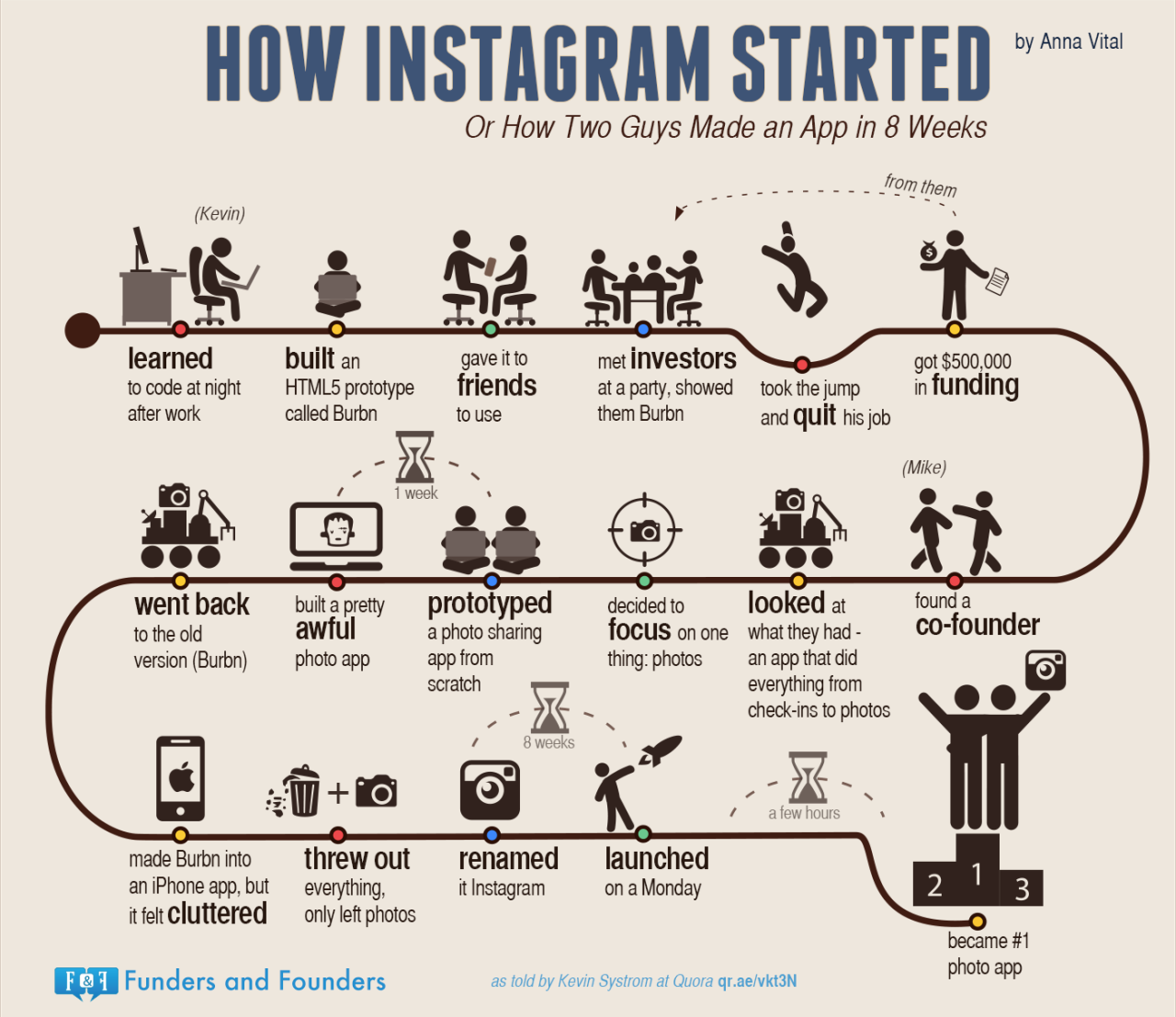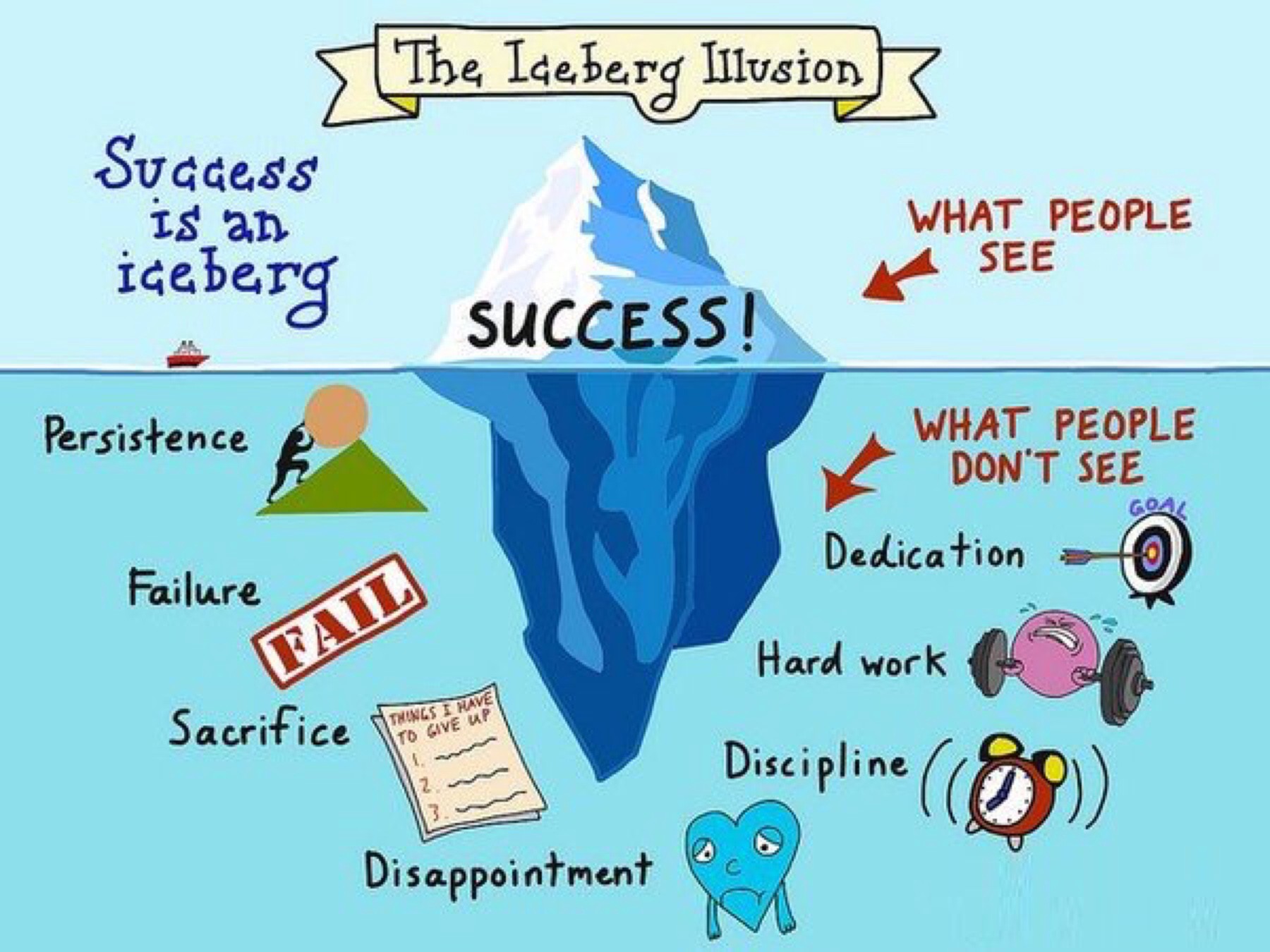How do others share their voices?
How can I show and share my voice in a relatable way?
MINDS ON
“
Anyone who has never made a mistake has never tried anything new.
~ Albert Einstein
Defining Success
One of the biggest misconceptions about learning is that it is supposed to be "easy," when in fact if it's easy, you have not really learned as much as if you had experienced some difficulty along the way. Many of the most successful people in the world have experienced setbacks, or seemingly insurmountable challenges, but have persevered to overcome their obstacles.
Consider the founders of Instagram for example. They experienced difficulties, and in a very short time took feedback and adapted their product to become extremely successful. Click on the infographic to see a larger version.

Now consider the metaphor that success is like an iceberg. Click on the infographic to see a larger version.

 Overcoming Challenges
Overcoming Challenges
In a written blog post, explain your thinking on the following:
- What is your definition of success?
- How do challenges make you feel?
- What do you do to overcome or persevere when faced with challenges?
- How do you feel about creating media texts?
- Is this a new challenge for you or do you feel confident in your abilities? Explain your thinking.
- How do you plan to incorporate your teacher's feedback into your media text?
ACTION
 Media Analysis Summative
Media Analysis Summative
 Tips
Tips
1. In the last lesson, you created a plan to tell a story on a topic of your choosing. Using that same topic, find three media texts (one audio, one photo and one video) that express the same (or similar) meaning as your text.
2. For each of the media texts, apply a different side of the media triangle to analyze the text. You should answer at least three of the questions for each side. Use the graphic organizer below to collect your thinking.
MediaTriangleQuestions
3. Using one of the texts you selected, complete the "Part B: Detecting Bias" table on the organizer, Media Analysis Graphic Organizer. Be sure to explain which text you are using for this analysis.
 Media Creation Summative
Media Creation Summative
In the last lesson, you created a plan for how you are going to tell your chosen story. Now it's time to take your series of photos.
 Tips
Tips
Organize your series of photos into the order that most effectively communicates the meaning you want to share.
 Tips
Tips
Then record your audio.
 Tips
Tips
Finally, put the series of photos and audio together into a video format.
 Tips
Tips
When you are finished, use the Media Techniques and Conventions: Video, Photo and Audio handouts to analyze your finished product; ensure that your media text meets most of the criteria listed.
 Tips
Tips
CONSOLIDATION
So, What Did You Learn?
In this lesson you completed the media analysis and creation summative assignments for this unit.
 Reflection #10
Reflection #10
In a method of your choosing, share your reflections on what you learned in this lesson. Some ideas to consider are:
- Which part of the summative did you find easier to complete - the analysis or creation?
- Why do you feel this way?
- Which part of the summative do you feel you learned more from?
- Why do you feel this way?
- How did having a plan and teacher feedback help you to complete the creation part?
- Have you ever used such a detailed plan before in your learning?
- How did it help or hinder you?
- When you think about the skills you used to complete these summative tasks, what helped you?
- For example, how did your speaking skills help you add emotion to your audio?
- When you were writing your story, how did your knowledge of stories (reading skills) help you to make sure your meaning was communicated effectively in your text?
- What challenges did you face in completing the video?
- How did you overcome them?
- What did you like best about your work on the organizer and on your media product?
- Explain why you feel this way.
- You will be completing another media project later in the course. What do you plan to do differently next time?
Did I Remember To...
| Checklist Items | |
|---|---|
| write a blog post about overcoming challenges? | |
| complete the media analysis graphic organizer and submit it to my teacher? | |
| complete all steps of the media creation summative task and submit the finished product to my teacher? | |
| complete Reflection #10? |